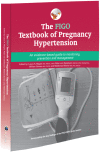Reverse innovation in maternal health
- PMID: 29051778
- PMCID: PMC5637995
- DOI: 10.1177/1753495X17700515
Reverse innovation in maternal health
Abstract
Reverse innovation, defined as the flow of ideas from low- to high-income settings, is gaining traction in healthcare. With an increasing focus on value, investing in low-cost but effective and innovative solutions can be of mutual benefit to both high- and low-income countries. Reverse innovation has a role in addressing maternal health challenges in high-income countries by harnessing these innovative solutions for vulnerable populations especially in rural and remote regions. In this paper, we present three examples of 'reverse innovation' for maternal health: a low-cost, easy-to-use blood pressure device (CRADLE), a diagnostic algorithm (mini PIERS) and accompanying mobile app (PIERS on the Move), and a novel method for mapping maternal outcomes (MOM).
Keywords: Geographic information systems; global health; mobile technology; reverse innovation.
Figures
References
-
- Frenk J, Gomez-Dantes O, Moon S. From sovereignty to solidarity: a renewed concept of global health for an era of complex interdependence. Lancet 2014; 383: 94–97. - PubMed
-
- Chou D, Daelmans B, Jolivet RR, et al. Ending preventable maternal and newborn mortality and stillbirths. BMJ 2015; 351: h4255–h4255. - PubMed
-
- Say L, Chou D, Gemmill A, et al. Global causes of maternal death: a WHO systematic analysis. Lancet Glob Health 2014; 2: e323–e333. - PubMed
LinkOut - more resources
Full Text Sources
Other Literature Sources




